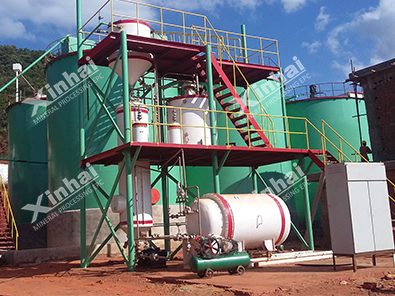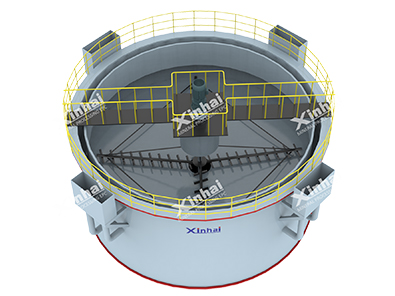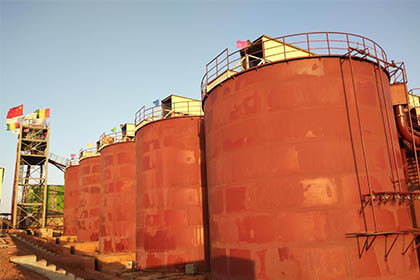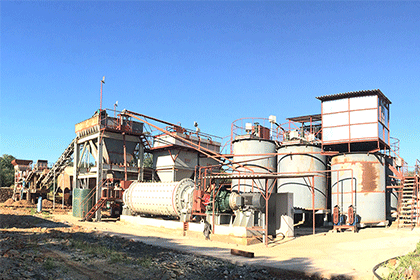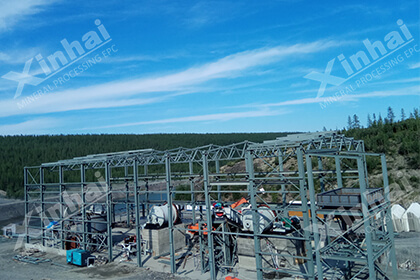Gold Cyanidation Methods Explained
 Laura
Laura
 Sep 13, 2024
Sep 13, 2024
 916
916
If you want to know more details about equipment, solutions, etc, please click the button below for free consultation, or leave your requirements!
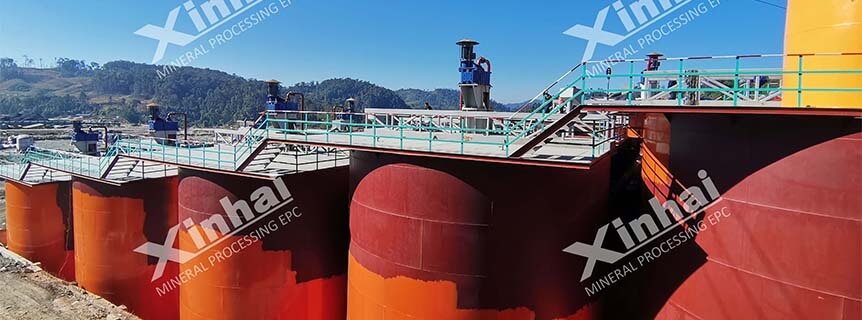
Laos 2000tpd gold extraction plant project site
Gold has fascinated humanity for centuries, serving not only as a symbol of wealth and power but also as a critical resource for various industries. One of the most significant breakthroughs in the field of metallurgy was the development of cyanidation methods for gold extraction. This blog post will explore the history, chemistry, processes, advantages, disadvantages, and environmental considerations of gold cyanidation methods, providing a comprehensive understanding of this vital technique.
01Historical Background
BackThe cyanidation process for gold extraction was first discovered in the late 19th century. The gold rushes of the 1800s led to an insatiable demand for gold, prompting miners to seek more efficient extraction methods. In 1887, Scottish chemist John Stewart MacArthur, along with his brothers, patented the cyanidation process, which would revolutionize gold mining.
The initial method involved treating crushed gold ore with a dilute solution of sodium cyanide. This process allowed for the extraction of gold from ores that were previously considered too low-grade to be economically viable. By the early 1900s, cyanidation became the dominant method of gold extraction, leading to a surge in gold production worldwide.
02The Chemistry of Cyanidation
BackThe fundamental chemical reaction involved in cyanidation is the dissolution of gold in a cyanide solution. The basic reaction can be represented as follows:
\[
4Au + 8NaCN + 2H2O \rightarrow 4Na[Au(CN)2] + 2NaOH
\]
In this reaction, solid gold (Au) reacts with sodium cyanide (NaCN) and water (H2O) to form a soluble gold complex, sodium gold cyanide (Na[Au(CN)2]). This process is highly efficient, allowing for the extraction of gold from ore at concentrations as low as 0.01 ounces per ton.
03Factors Influencing Cyanidation
BackSeveral factors can influence the efficiency of the cyanidation process, including:
1. **Particle Size**: The surface area of the gold particles is crucial. Finer particles increase the surface area and enhance the reaction rate with cyanide.
2. **Cyanide Concentration**: Higher concentrations of cyanide can increase the rate of gold dissolution, but they also raise the environmental concerns associated with cyanide use.
3. **pH Levels**: The pH of the solution affects the stability of the cyanide complex. A pH of around 10-11 is generally optimal for gold extraction.
4. **Temperature**: Higher temperatures can accelerate the reaction rate, leading to faster gold dissolution.
5. **Oxygen Levels**: Oxygen is essential in the cyanidation process, as it helps to oxidize the gold and enhances its solubility.
04Cyanidation Methods
BackThere are several cyanidation methods used in gold extraction, each with its own advantages and disadvantages. The two most commonly employed methods are **heap leaching** and **tank leaching**.
1. Heap Leaching
Heap leaching is a method in which crushed ore is stacked in heaps on a lined pad, and a cyanide solution is sprayed or dripped over the heap. The cyanide solution percolates through the heap, dissolving gold as it moves through the ore. The pregnant solution, which contains dissolved gold, is collected at the bottom of the heap and processed further to recover the gold.
1). Advantages of Heap Leaching
- **Cost-Effective**: Heap leaching is generally less expensive than other methods, particularly for low-grade ores. It requires less equipment and infrastructure.
- **Environmental Impact**: When done properly, heap leaching can have a lower environmental footprint compared to traditional mining methods.
- **Flexibility**: This method can be used on various ore types, including those that are not amenable to conventional milling.
2). Disadvantages of Heap Leaching
- **Time-Consuming**: The process can take several months or even years to complete, as the leaching solution must percolate through the heap.
- **Lower Recovery Rates**: Heap leaching may not extract all the gold from the ore, particularly if the gold is finely disseminated.
- **Environmental Concerns**: Although heap leaching can be environmentally friendly, the potential for cyanide leakage and groundwater contamination remains a significant concern.
2. Tank Leaching
In tank leaching, finely ground ore is mixed with a cyanide solution in a series of agitated tanks. The agitation promotes contact between the cyanide solution and the ore, enhancing gold dissolution. After a predetermined period, the pregnant solution is separated from the solid residue, and the gold is recovered from the solution.
1). Advantages of Tank Leaching
- **Higher Recovery Rates**: Tank leaching typically yields higher gold recovery rates compared to heap leaching, as the agitation promotes better contact between the solution and the ore.
- **Faster Processing**: The process is generally quicker, allowing for more efficient operations and reduced downtime.
- **Controlled Environment**: Tank leaching allows for better control of pH, temperature, and cyanide concentration, optimizing the extraction process.
2). Disadvantages of Tank Leaching
- **Higher Costs**: The capital and operational costs of tank leaching are generally higher due to the need for specialized equipment and infrastructure.
- **Energy Intensive**: The need for agitation and temperature control can lead to increased energy consumption.
- **Waste Management**: The solid residues generated during tank leaching require careful management to prevent environmental contamination.
05Gold Recovery from Cyanide Solutions
BackOnce gold is dissolved in the cyanide solution, it must be recovered for further processing. There are several methods for recovering gold from cyanide solutions, including:
1. Carbon Adsorption
In the carbon adsorption process, activated carbon is used to adsorb gold from the cyanide solution. The pregnant solution is passed through a series of carbon columns, where the gold complexes attach to the carbon. The loaded carbon is then stripped of gold using a concentrated cyanide solution or heat, allowing for the recovery of gold.
2. Electrolytic Recovery
Electrolytic recovery involves passing an electric current through the cyanide solution, causing gold to deposit onto a cathode. This method is efficient and can yield high-purity gold.
3. Precipitation
Gold can also be recovered from cyanide solutions through precipitation methods, such as using zinc dust in a process known as the Merrill-Crowe process. In this method, zinc dust is added to the pregnant solution, causing gold to precipitate out of the solution.
06Environmental Considerations
BackWhile cyanidation has proven to be an effective method for gold extraction, it is not without its environmental concerns. The use of cyanide poses significant risks to human health and the environment, particularly if not managed properly. Some of the key environmental considerations include:
1. Cyanide Toxicity
Cyanide is highly toxic to humans and wildlife. Accidental spills or leaks can lead to severe environmental damage, affecting water sources and local ecosystems. Proper containment and monitoring are essential to mitigate these risks.
2. Water Management
The cyanidation process requires significant amounts of water, which can strain local water resources, particularly in arid regions. Effective water management strategies are necessary to minimize water usage and prevent contamination.
3. Waste Management
The solid residues generated during the cyanidation process, known as tailings, must be managed carefully to prevent leaching of cyanide and heavy metals into the environment. Tailings storage facilities must be designed to minimize the risk of failure and environmental contamination.
4. Regulatory Compliance
Governments and regulatory agencies have established guidelines and regulations for the use of cyanide in mining operations. Compliance with these regulations is crucial for minimizing environmental impacts and ensuring the safety of local communities.
07Future Trends in Gold Cyanidation
BackAs environmental concerns continue to grow, the mining industry is exploring alternative methods and technologies to improve the sustainability of gold extraction. Some of the emerging trends include:
1. Alternative Reagents
Researchers are investigating alternative reagents to cyanide for gold extraction. These alternatives aim to reduce toxicity and environmental impact while maintaining efficiency. Some promising candidates include thiosulfate, bromine, and glycine.
2. Improved Monitoring Technologies
Advancements in monitoring technologies, such as remote sensing and real-time data analytics, can help mining companies better manage cyanide usage and environmental impacts. These technologies can enhance decision-making and improve operational efficiency.
3. Sustainable Practices
Mining companies are increasingly adopting sustainable practices, such as closed-loop water systems, to minimize water usage and reduce environmental footprints. Implementing best practices in waste management and rehabilitation can also help mitigate the impacts of mining operations.
4. Community Engagement
Engaging with local communities and stakeholders is essential for addressing environmental concerns and building trust. Transparency in operations, effective communication, and collaboration with local communities can lead to more sustainable mining practices.
08Conclusion
BackGold cyanidation methods have played a pivotal role in the modern gold mining industry, enabling the extraction of gold from low-grade ores and contributing to the global economy. While the cyanidation process is highly effective, it is essential to consider the environmental and social implications associated with its use.
As the mining industry moves forward, embracing alternative methods, improved monitoring technologies, and sustainable practices will be crucial for ensuring the responsible extraction of gold. By balancing economic interests with environmental stewardship, the industry can continue to thrive while minimizing its impact on the planet.
In conclusion, understanding gold cyanidation methods is vital for anyone involved in the mining sector, from engineers and geologists to environmentalists and policymakers. As we strive for more sustainable practices in gold extraction, the lessons learned from cyanidation can guide us toward a more responsible and equitable future in mining.
Contact us and learn more about Gold Cyanidation Methods.
 +86 18716000713
+86 18716000713 xlyin@xinhaimining.net
xlyin@xinhaimining.net




 Message
Message Chat Now
Chat Now



